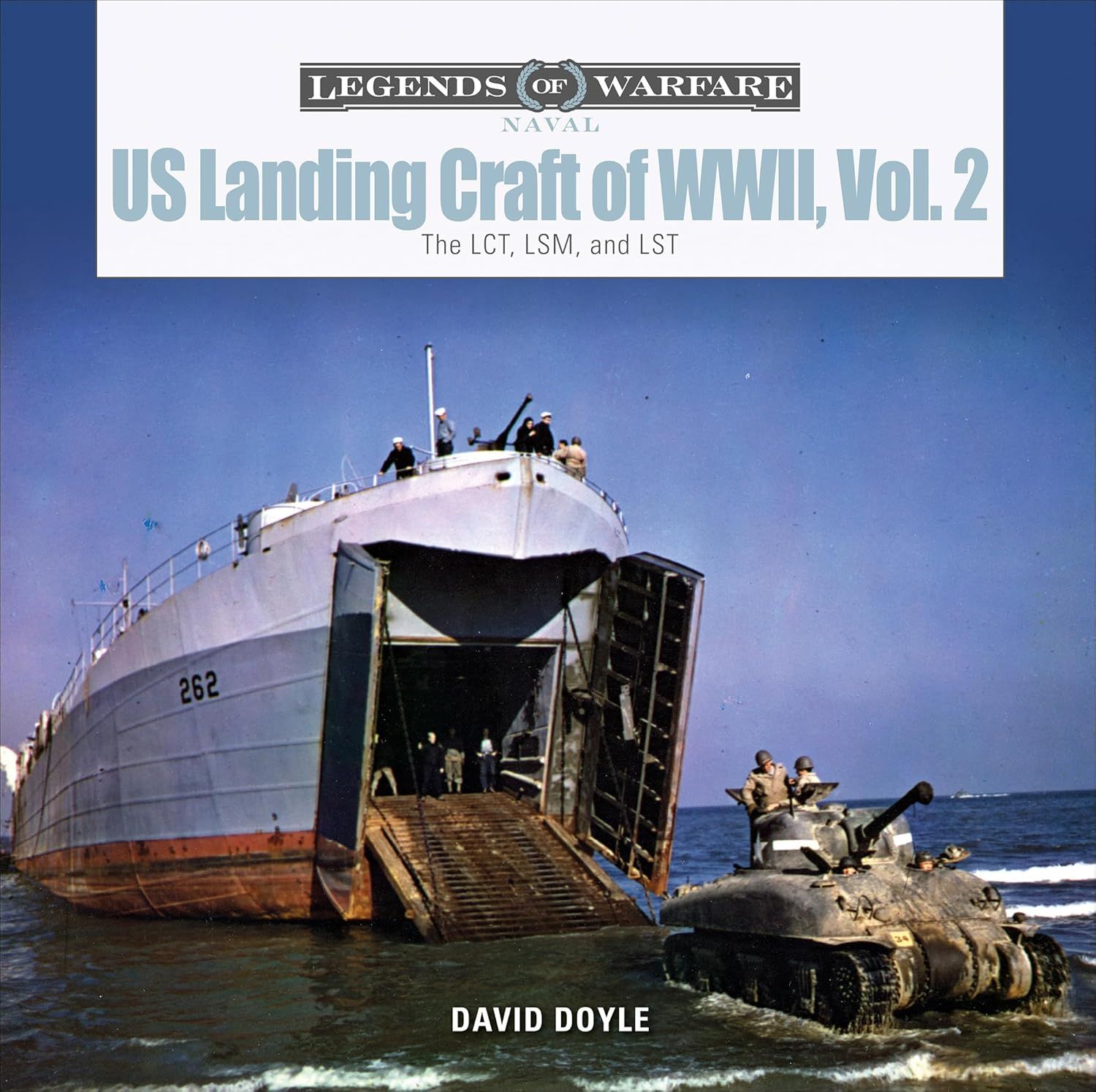US Landing Craft of WWII Vol.2
Author David Doyle
Introduction
Water, be it in the form of an ocean, river, large lake, or even a moat, has long been considered a formidable first line of defense. Hence, through the ages considerable effort has been expended developing ways to breach those defenses.
With an eye primarily toward sea-to-shore landings, during World war II a number of types of landing craft were developed. Volume 1 explored primarily the smaller landing craft-the LCP(L), LCP(R), LCV, LCVP, LCM, and LCI. Most of those vessels were intended primarily to place troops ashore.
In this second volume we will be looking at the LCT, LSM, LCS(L)(3), and LST, or the Landing Craft, Tank; Landing ship, Medium; Landing craft, Support (Large); and Landing Ship, Tank. Most of these relatively large vessels were used to put ashore large numbers of tanks, trucks, artillery, and other heavy mechanized equipment.
The development of landing craft involved a great deal of interservice cooperation (and rivalry) not only between the Navy and Coast Guard (who owned and operated the vessels) and the Army and Marine Corps, whose troops and equipment the ships were charge with transporting, but also between the US Navy and the British Admiralty.
As far back as 1941, Great Britain had sought to have landing craft huilt in the US, yet the US Navy had rejected manu of the British ideas, including that of the Landing Ship, Tank.
Ultimately, compromise was reached-with it being agreed that the Marines would handle amphibious landings in the Pacific, while the Army dealt with those in the Atlantic, and that a variety of vessels would be produced to satisfy British requirements, with many of those designs modified for US use. As testimony to the soundness of those designs, many of these vessels continued to be used not only throughout World War II and Korea, but also in the Vietnam War.
